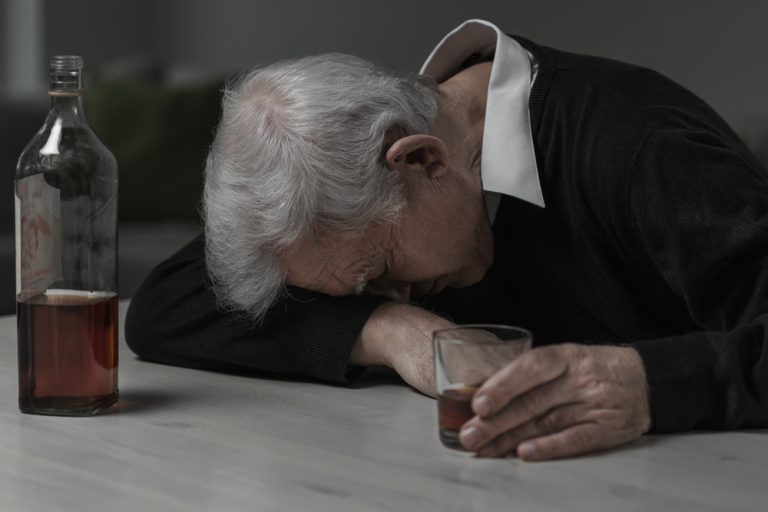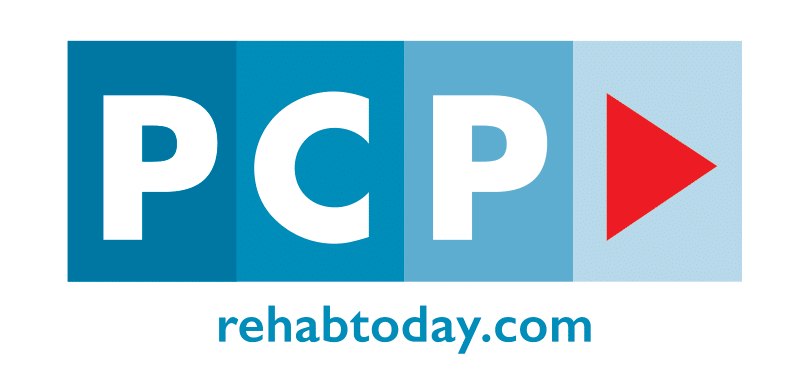Addiction has never been the same since it first started emerging. In the beginning, the trend began just because alcohol and cigarettes were openly promoted. Later on, the popularity had suffered a fall because everyone looked at it as an unhealthy habit and not a glamorous lifestyle.
It is important to note that genetic and environmental factors both play a role in addiction trends across generations.
Amidst this, a lot of addictive substances emerged, and despite the awareness, many people fell into their trap. According to reports from the mental health services administration, illicit drug use increased among people from 2.7% in 2002 to 5.8% in 2010. This signifies that while even the movements of awareness are strong, there still needs to be some work done to stop dependencies from developing. Additionally, consumption patterns vary across generations and are influenced by both genetic factors and environmental factors.
Putting a full stop to this toxic behaviour requires understanding the science behind addiction through the ages. Simple genetic mechanisms alone cannot explain the inheritance of addiction, as environmental factors contribute to its complexity. This guide will help you explore how addiction evolved through generations, their perceptions, and the availability of treatments. So, let’s dive into the details.
Baby Boomers With Addiction

These are the individuals who belonged to the 1946 and 1964 eras. During this time, addiction emerged as a trend that was not only accepted but also encouraged. Drinking and smoking made individuals appear sophisticated, and drug and alcohol use became common behaviours among Baby Boomers. Having pills to fall asleep or reduce stress was considered a statement symbol.
These people who developed dependencies, to this day, face the dilemma of having dependency on these substances. Chronic alcohol drinking has been a major factor contributing to long-term health issues in this generation. Alcohol was the most commonly abused drug among Baby Boomers. In fact, many have faced fatal health consequences due to these toxic habits, with disease control estimated data highlighting the significant number of alcohol-related deaths. For instance, a study revealed, Baby Boomers are 27% more likely to die from a prescription overdose. The long-term impact of early and sustained alcohol consumption has also increased the risk of alcohol use disorder among Baby Boomers.
Substance Use Disorders and Addictions
Baby Boomers were usually addicted to substances such as:
Tobacco Cigarettes: Smoking was portrayed as a glamorous activity in films, advertisements, and even social gatherings. Many Baby Boomers started smoking cigarettes in their early adolescence, unaware of the health consequences it would bring later on. Tobacco smoke and nicotine exposure are now known to increase risks such as low birth weight, sudden infant death syndrome, and fertility issues.
Alcohol: Drinking was another social activity that was expected to be present in every other setting. Whether it was a lunch, dinner or any celebration, wine, beer, and whiskey were served at the table. This casual drinking developed into a lifelong dependency for many. Alcohol was the most commonly abused drug and one of the five major drugs of abuse during this era.
Prescription Drugs: Boomers started using prescription drugs to calm stress or cure insomnia. They didn’t consider these drugs addictive; instead, they viewed them as helpers to calm down their nerves. These commonly included sleeping pills, sedatives or mild tranquillisers.
Baby Boomers’ addictions often involved major drugs such as alcohol, tobacco, and prescription medications, which are among the five major drugs known to have significant transgenerational and epigenetic effects.
Perceptions: How Environmental Factors Contribute
Addiction, according to Baby Boomers, was normal. Addressing the issue and seeking its treatment was considered a stigma in this era. Consequently, individuals who had dependencies continued abusing the substances till the last stages of their lives.
Additionally, as the habit was considered a personal choice and not a medical issue, everyone kept suffering in silence. Together, the lack of awareness and societal pressure made up a potent setup, allowing addiction to grow further.
Treatments Available
Treatment options started to emerge by the late 1970s. While the options were still limited, they were somehow effective. However, not everyone was courageous enough to take the step of seeking out professional help. As a result, they kept abusing the substance until their health started deteriorating.
Impact
The results of the dependencies that developed in Baby Boomers are evident even today. Their addiction has progressed to the point that they have started to experience life-threatening health conditions like liver malfunction, kidney diseases, or even cancer.
Additionally, parental exposure to alcohol and tobacco prior to conception can result in fatal alcohol exposure and increase the risk of sudden infant death syndrome in offspring, highlighting the intergenerational impact of substance use.
Generation X With Addiction

These are the individuals born between 1965 and 1980. Now, for these people, the circumstances and the cultural backdrop were different. They were a bit more informed about the consequences of addiction.
This was also the time when the media started working on bringing awareness about addictive substances. Unlike Boomers, Gen X people refrained from doing drugs; nevertheless, many fell into its trap. This uncertainty occurred due to the urge of many to experiment with the drugs. Substance abuse and drug abuse became significant issues for Generation X, as experimentation often led to more serious problems. Unfortunately, to this day, many Gen X individuals still bear the consequences of this, including a notable rise in substance use disorders among this generation. Consumption patterns vary between generations, with Gen X showing different preferences and behaviours compared to Baby Boomers.
Drug Abuse and Addictions
Instead of smoking and drinking, Gen X individuals preferred experimenting with other hard substances such as:
Cocaine: During the 1980s, cocaine emerged as a new drug. Cocaine is one of the drugs of abuse, and research shows that abused drugs influence not only the users but also, potentially, their offspring. Its effects made everyone curious and compelled them to try this substance just once. Nevertheless, this behaviour backfired very quickly, forming a never-ending addiction cycle. Studies on parental cocaine administration and prenatal cocaine exposure have demonstrated that utero cocaine exposure can result in lasting effects on offspring.
Heroin: By the early 1990s, people also got familiar with heroin. Alcohol and cigarettes weren’t providing that “high” feeling anymore. To achieve this temporary happiness, many turned to heroin, which then made them dependent on the drug.
Ecstasy & Club Drugs: Gen X started the trend of attending or arranging rave parties. To make the most of their events, they started doing ecstasy or club drugs. These substances were potent, and by the time people realised their consequences, they would have already formed a dependency on them.
Perceptions
This was the era of the “War on Drugs.” The media initiated anti-drug campaigns. While this initiative was effective in bringing awareness about drugs, many viewed it as a sign to use drugs underground only. Even though social stigma was there, conversations about the impact of addiction on mental health started emerging.
Treatments Available
The availability of treatment options expanded for Gen X. Rehab centres started to emerge, providing therapies to fix the underlying cause of addiction. During this era, cognitive behavioural therapy (CBT) started to gain popularity. While the treatments available were effective, the social stigma and cost associated remained an issue for many.
Lasting Impact
In contrast to Boomers, Generation X had a better and improved outlook on addiction. While many abused drugs in their youth, in the later stages were willing to seek therapy to treat their condition. This bold step of theirs set the stage for future generations not to shy away from seeking help for substance use disorder.
Additionally, research highlights that substance use and abuse prior to conception can have transgenerational effects, impacting the physiology and behaviour of subsequent generations through epigenetic mechanisms, even in the absence of direct fatal exposure.
Millennials With Addiction

Millennials, born between 1981 and 1996, encountered substance use and behavioural addictions at the same time. By now, people were well aware of addiction. It wasn’t treated as a moral failing, but was considered a disease. The past decade has seen significant economic and social changes that have shaped Millennials’ experiences with addiction, influencing both the development of new addictions and the ways they seek help.
This time, science was also working hard to come up with more effective strategies to treat addiction. The rise of chemical abuse among Millennials has also been linked to increased exposure to environmental toxins, including drugs, which can have lasting effects on this generation’s health and addiction trends. And the people who were going through dependency were also willing to reach out for help without thinking about society.
Drug and Alcohol Use and Addictions
By the end of the 1990s, the opioid epidemic had started to emerge. This event led individuals to abuse prescription drugs. Research has shown that female drug use, particularly among substance abusing women prior to conception, can have transgenerational impacts on offspring through epigenetic mechanisms and maternal rearing effects, even without direct prenatal exposure. People started overdosing on OxyContin and fentanyl by the year 2010. At this time, a new addictive trend emerged: vaping.
People started to invest in vapes instead of cigarettes. Advertisements started to portray it as a less harmful alternative to cigarettes while hiding its potential risks. Alcohol also remained in the picture, targeting high school or college-aged students more.
However, chemical abuse wasn’t the only thing that was on the rise during this era. Millennials also faced severe behavioural addictions. As the internet during this time was developing tremendously, many ended up with dependencies related to social media, gambling, and video games.
Perceptions
This was the era when social media platforms such as Facebook, Instagram, and Twitter started gaining more attention. Because of this, many people were able to get peer support online. Now people have started to treat addiction as a disease. Campaigns began to explain the science behind dependencies and how to seek support.
Treatments Available
During the Millennial era, science expanded its horizons. Now, many advanced therapeutic interventions are available to treat addiction. Rehabilitation centres provided medication-assisted therapies and incorporated holistic, medical, as well as psychological approaches in their treatments.
While the treatment courses were more improved for substance addiction, the cure for behavioural addiction was still nowhere. Many therapists treated digital dependencies through counselling or digital detox on a trial-and-error basis.
Lasting Impact
Millennials remain the most deeply impacted by addiction. This toxic habit of theirs had them lose family members, friends and even jobs. Nevertheless, these are also the people who are the most aware of addiction and its consequences. Mounting evidence suggests addiction can have effects on offspring, as shown in literature documenting offspring effects related to parental drug exposure and epigenetic mechanisms. The moment they sense they are going to need professional support, they aren’t going to shy away due to societal judgment.
Generation Z With Addiction

Gen Z is the one group that is the most aware of addiction. For these people, social media is everything. They eat, sleep and work while using their smartphones. But this doesn’t mean they aren’t abusing any substances. Instead of cigarettes, alcohol, and prescription drugs, they have found other drugs to abuse. The risks associated with drug alcohol use remain significant, and recent research emphasizes the importance of study designs that avoid direct fetal exposure to better understand the long-term effects of substance use.
Their dependency developed mainly due to their obsession with social media and partly because of the pandemic. Using social platforms excessively exposed them to bullying. To cope with the situation, they then resorted to addictive substances. Similarly, COVID-19 also stranded Gen Z at home. To relieve this stress, they, of course, turned to addictive drugs. It is important to note that parental drug exposure can impact offspring even in the absence of direct fatal exposure, highlighting the need to consider both inherited and environmental influences.
Addictions
Gen Z addictions have evolved. They are no longer the individuals obsessed with drinking or smoking. Even though they still smoke, their focus from tobacco and nicotine has shifted to cannabis or other psychedelics. This shift reflects a broader trend in substance use, as the five major drugs—alcohol, nicotine, cannabinoids, opioids, and cocaine—remain commonly abused, with major drugs continuing to impact health across generations. Cannabis, in particular, is a widely abused illicit substance among Gen Z, raising concerns about its long-term effects. With that, the legalisation of Fentanyl across many countries has also compelled them to overdose on the drug.
One behavioural addiction that is more than common among Gen Z is gaming. Whether it is gambling or just playing for recreational purposes, this behaviour of theirs has been found to lead to serious consequences.
Perceptions
Gen Z is more open about addiction than any generation before. They discuss mental health freely, advocate for harm reduction, and push for less stigma in seeking treatment. However, their digital culture also blurs the line between normal use and dependency, making it harder to recognise harmful patterns.
Treatments Available
Treatment for Gen Z includes a wide range of mental health resources, both in-person and digital (therapy apps, online counselling). Harm reduction strategies like naloxone distribution, vaping bans, and cannabis regulations target their specific risks. For digital addictions, treatments are still emerging, including digital detox camps and therapy focused on screen balance.
Lasting Impact
The long-term effects of Gen Z’s addictions are still unfolding. Their heavy digital dependency may influence mental health, attention spans, and social skills in ways we are only beginning to understand. Addiction can have different impacts on female offspring and male offspring, with some studies specifically focusing on not female offspring to highlight gender-specific outcomes. Meanwhile, their openness and advocacy may lead to more compassionate approaches to addiction than any previous generation has achieved. Addiction can also influence gene expression and affect gene transcription through epigenetic changes, which describe myriad processes involved in inheritance.
Concluding Thoughts
Addiction has never been static; it has evolved with time, technology, and culture. For Baby Boomers, it was cigarettes and cocktails. For Gen X, it was crack and heroin. For Millennials, opioids and digital distractions dominated. For Gen Z, it’s vaping and social media. Each generation has faced unique struggles, but also unique opportunities to fight back.
By learning from these shifts, we can build more effective treatments and break the cycles that trap so many. If you or someone you know is ready to make a change, you can always trust the PCP (The Perry Clayman Project). Our experts understand the challenges that come with addiction. Contact us today and take the first step forward in your healing journey.
Author
-
Dr Otulana is PCP’s longest-serving doctor. He is an experienced Physician with Specialist Interest in Substance Misuse Management and he has a wide range of experience in the assessment and management (including detoxification) of clients with various drug and substance addiction problems. Dr Otulana started practising as a doctor in 2000 and with over 10 years as an Addiction Physician. He is an Advanced Addiction Practitioner Member of Addiction Professionals and also holds the Certificate in Clinical Psychopharmacology (Part 1) of the British Association for Psychopharmacology. He is additionally a strong healthcare services professional with a Master of Business Administration (M.B.A.) degree from Cambridge University Judge Business School.
View all posts








